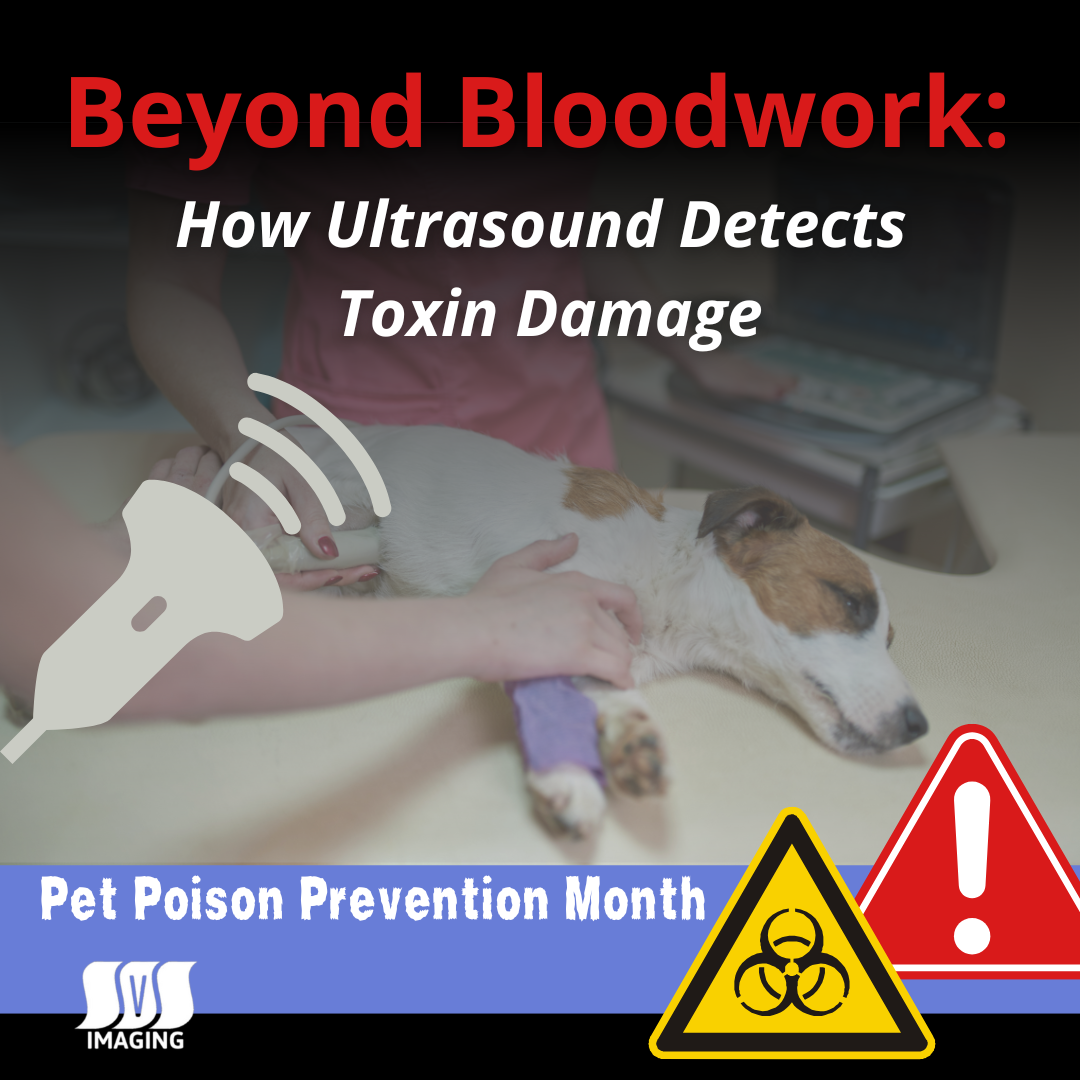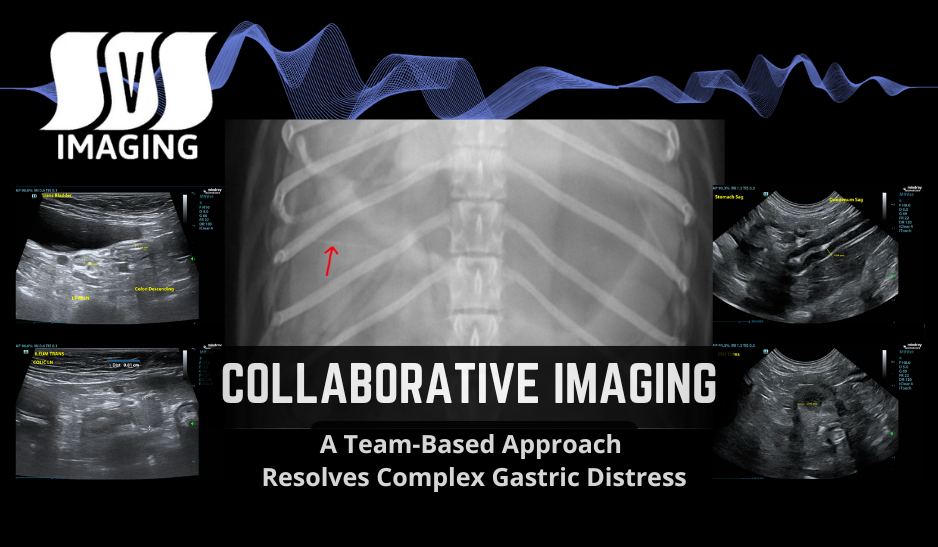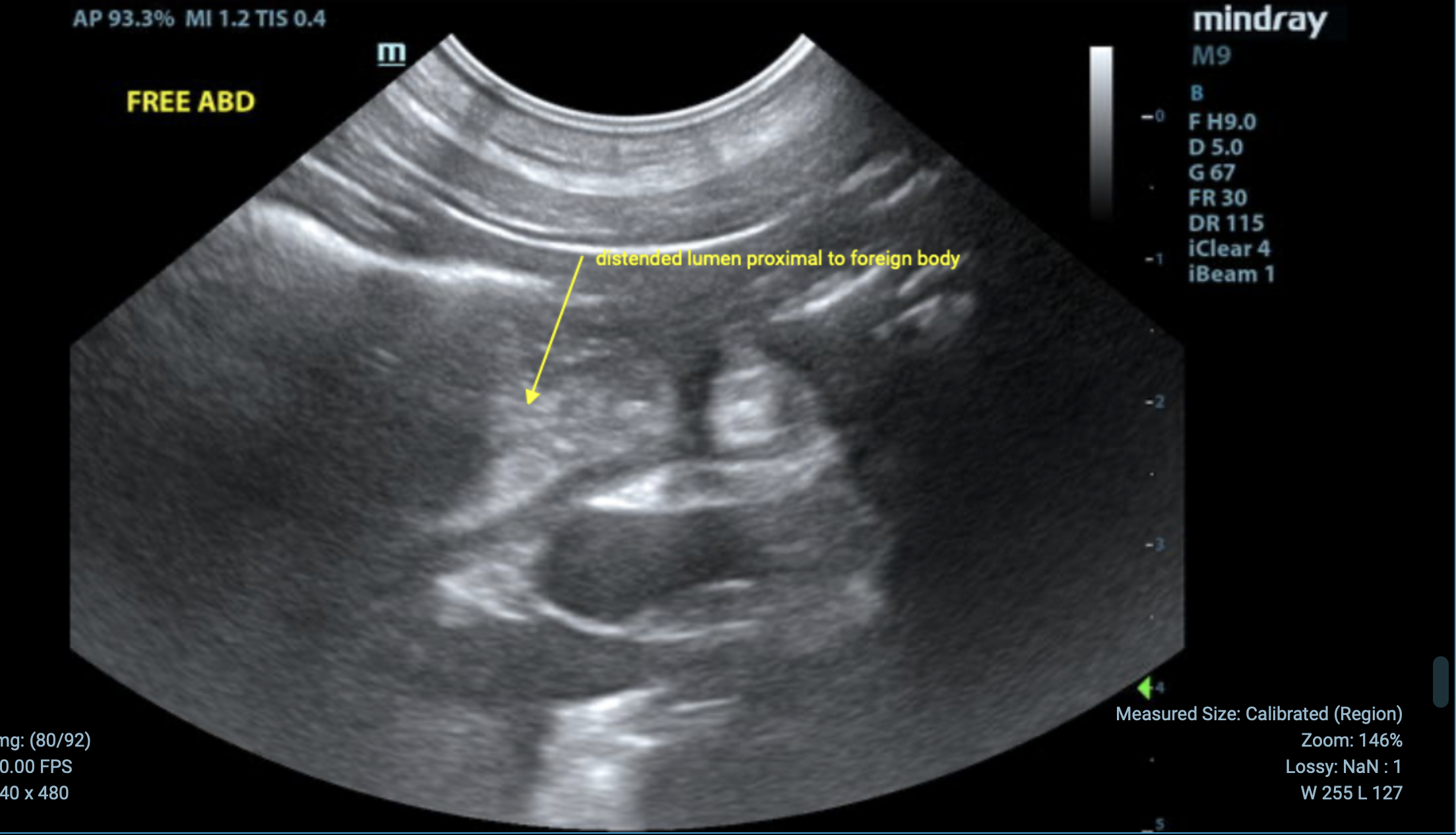Collaborative Imaging: A Team-Based Approach Resolves Complex Gastric Distress
Leveraging Multiple Specialties on Complex Cases
3 min read
.jpg) Fred Gromalak, DVM
:
Mar 26, 2025 11:12:09 AM
Fred Gromalak, DVM
:
Mar 26, 2025 11:12:09 AM

March is Pet Poison Prevention Awareness Month, a crucial time for pet owners and veterinarians to recognize the dangers of toxic substances. Many toxins cause severe damage to internal organs before symptoms become apparent. Early detection is absolutely critical—delayed treatment can mean irreversible damage or even death.
While bloodwork is an essential diagnostic tool, ultrasound provides real-time visualization of how toxins impact the heart, liver, kidneys, pancreas, and other vital systems. In this blog, we explore how ultrasound plays a key role in diagnosing and managing toxin-induced injuries in pets.

Certain toxins can wreak havoc on a pet’s cardiovascular and respiratory system, leading to irregular heartbeats, damage to the heart muscle, and even breathing difficulties. Some common culprits include:
Oleander, foxglove, and azalea plants – Can cause severe heart arrhythmias.
Chocolate, energy drinks (caffeine & theobromine) – Lead to dangerously high heart rates.
Nicotine poisoning – May result in cardiovascular collapse.
Carbon monoxide exposure – Reduces oxygen in the blood, leading to heart and lung distress.
Teflon fumes (in birds) – Can cause sudden, acute respiratory distress.
Veterinarians use ultrasound to check the heart’s function, assess any fluid buildup around the heart or lungs, and identify abnormal blood flow patterns that may indicate toxin exposure.
 Liver Damage from Toxic Substances
Liver Damage from Toxic SubstancesThe liver is responsible for filtering toxins, but some poisons overwhelm its defenses and lead to serious damage. Here are a few known liver-damaging toxins:
Xylitol (found in sugar-free gum & candy) – Can cause liver failure in dogs.
Certain mushrooms (Amanita species) – Known to trigger acute liver failure.
Blue-green algae (microcystins) – Leads to liver necrosis and dangerously low blood sugar.
Acetaminophen (Tylenol) – Highly toxic to cats and causes liver damage.
Moldy food (aflatoxins from corn, peanuts) – Can lead to liver failure over time.
Heavy metals (lead, copper storage disease in some dog breeds) – Toxic accumulation damages liver cells.
By scanning the liver, veterinarians can check for inflammation, abnormal tissue changes, bile duct issues, and fluid buildup—all indicators of toxin-related liver damage.

The kidneys filter out harmful substances, making them particularly vulnerable to toxins. Acute kidney injury (AKI) or long-term kidney disease can result from exposure to:
Antifreeze (ethylene glycol) – Forms deadly crystals in the kidneys.
Lilies (for cats) – Even a tiny nibble can lead to kidney failure.
Grapes & raisins – Can cause sudden kidney shutdown in dogs.
NSAIDs (ibuprofen, naproxen, aspirin) – Damage kidney function over time.
Aminoglycoside antibiotics (if overdosed) – Can be toxic to the kidneys.
Vitamin D toxicity (from rodenticides or supplements) – Leads to kidney mineralization.
With ultrasound, veterinarians can assess kidney size, structure, and blood flow. They can also detect signs of damage like abnormal kidney texture, swelling, or mineral deposits.
 When the Pancreas Takes a Hit
When the Pancreas Takes a HitCertain toxins can inflame the pancreas, leading to pancreatitis or long-term pancreatic damage. Some common triggers include:
Organophosphates (pesticides, insecticides) – Can damage the pancreas and cause severe poisoning symptoms.
Long-term corticosteroid use – May increase the risk of pancreatitis.
High-fat foods (table scraps, bacon, fried foods) – Can trigger pancreatitis in sensitive dogs.
Scorpion venom – In rare cases, can cause pancreatic inflammation.
Ultrasound imaging reveals pancreatic swelling, changes in tissue texture, and any surrounding fluid buildup—early signs of pancreatitis and toxin damage.

Certain toxins can lead to bladder irritation, urinary tract issues, and even dangerous crystal formation. A few to watch out for include:
Antifreeze (ethylene glycol) – Leads to calcium oxalate crystals in urine.
Vitamin D toxicity – Causes excess calcium, leading to urinary problems.
Some chemotherapy drugs – Can result in bladder inflammation.
Rodenticides (cholecalciferol-based) – Increase calcium levels and affect the urinary system.
Vets use ultrasound to detect urinary sediment, changes in the bladder wall, or crystal formation, which can indicate toxin exposure.
 When the Gut Suffers from Toxin Exposure
When the Gut Suffers from Toxin ExposureMany toxins affect the digestive system, causing ulcers, obstructions, or severe inflammation. Common offenders include:
Caustic substances (bleach, batteries, cleaning agents) – Can burn the digestive tract.
NSAIDs (ibuprofen, aspirin, naproxen) – May cause stomach ulcers or bleeding.
Grapes & raisins – Can lead to vomiting and potential kidney issues.
Xylitol (sugar substitute) – Causes vomiting, low blood sugar, and liver damage.
Garbage toxicity (moldy food, spoiled leftovers) – Can lead to gastroenteritis and tremors.
Foreign objects (toys, medication bottles, bones, plants) – May cause obstructions.
Ultrasound is great for spotting obstructions, delayed stomach emptying, and inflammation, helping vets determine the best course of action.
Ultrasound is a powerful diagnostic tool that helps veterinarians detect toxin-related damage early, often before lab values show abnormalities. Early detection can mean the difference between life and death for poisoned pets. If you suspect your pet has ingested a toxin, seek veterinary care immediately. Every second counts.
If for some reason you cannot reach a veterinary professional, you can call the ASPCA 24/7 Poison Control Hotline at 888-426-4435 or the Pet Poison Helpline at 855-764-7661 for expert guidance.

Leveraging Multiple Specialties on Complex Cases

The Emergency Foreign Body Hunt

In veterinary medicine, understanding the complexities of an animal’s urinary system is vital for both diagnosis and treatment. One of the key...